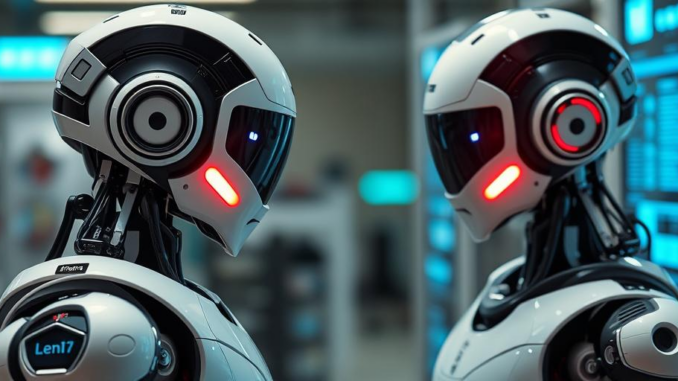
Summary
Service robots are revolutionizing healthcare by automating routine tasks, reducing the strain on healthcare workers, and enhancing patient care. From delivering medication and transporting lab samples to disinfecting rooms and managing inventory, these robots are improving efficiency and safety in hospitals. This article explores the growing role of service robots in healthcare and their potential to address workforce shortages and improve patient outcomes.
** Main Story**
Okay, let’s talk healthcare and robots. You know, the healthcare industry is facing a real crunch right now. Staff shortages, growing patient numbers, and the constant pressure to do more with less – it’s a lot. That’s where service robots come in; they’re not some sci-fi replacement for doctors and nurses, but a way to support them and boost the quality of care.
Think of it like this: instead of trying to replace people, we’re giving them a robotic helping hand. It’s about freeing up those amazing healthcare workers to focus on what really matters: patients.
Automating the Essentials
So, what are these robots actually doing? Well, quite a bit, actually. In a lot of hospitals, you’ll see them taking on these essential, but often time-consuming tasks.
-
Delivery and Transportation: Imagine robots zipping around, delivering medications, lab samples, or even a patient’s dinner. It’s faster, more reliable, and it frees up staff to focus on urgent patient needs. It minimizes the risk of human error, too.
-
Inventory Management: Keeping track of supplies is a surprisingly huge job! Service robots can monitor stock levels, place orders automatically, and even stock shelves. No more frantic searches for bandages or that missing piece of equipment, which, lets be honest, we’ve all been there.
-
Disinfection and Cleaning: This is a big one. Disinfection robots use UV light or other methods to deep-clean rooms and equipment. It’s about creating a sterile environment and reducing the spread of infections, meaning, ultimately, its about improving patient safety.
-
Administrative Tasks: And let’s not forget the paperwork! Robots can help with scheduling appointments, managing patient records, and processing paperwork. It frees up administrative staff and reduces wait times for everyone, a win-win.
More Than Just Automation
It’s not just about automating tasks, though, it’s also about creating a safer work environment. Robots can handle jobs that involve exposure to hazardous materials or infectious diseases, minimizing the risk for healthcare professionals. Think of it as giving them a layer of protection, letting them concentrate on care, not contamination.
Furthermore, robots enhance patient care by ensuring timely delivery of medications and other essentials, reducing wait times, and creating a more efficient and responsive healthcare system. I read about a study once, a small one I’ll admit, but it pointed towards improved patient outcomes and increased satisfaction. Who doesn’t want that?
The Future is Robotic, Probably.
What does the future hold? Well, I’m not Nostradamus, but I suspect we’ll see more sophisticated robots that can handle even more complex tasks and interact with patients more directly. Artificial intelligence and machine learning will play a huge role, allowing robots to learn and adapt.
That said, some people worry about robots taking over jobs. But I don’t see it that way. They’re designed to support human capabilities, not replace them. They’re filling critical gaps and letting healthcare pros focus on providing compassionate, high-quality care. Let’s face it, robots aren’t exactly known for their bedside manner!
So, as the healthcare industry continues to evolve, service robots will play an increasingly important role. They’re not a magic bullet, but they are a valuable tool for shaping the future of medicine and, crucially, improving patient outcomes. And really, isn’t that what we’re all aiming for?


The point about robots handling hazardous materials is significant. Beyond immediate safety, this could provide valuable data on exposure risks, informing preventative measures and improving long-term health outcomes for healthcare professionals.